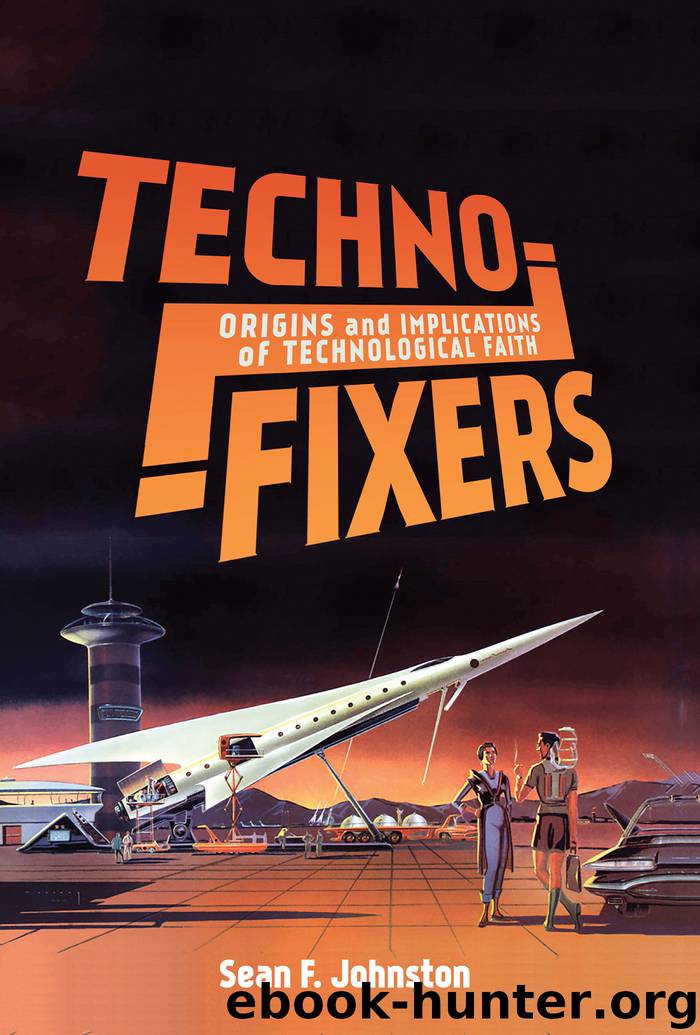Techno-Fixers by Sean F. Johnston

Author:Sean F. Johnston
Language: eng
Format: epub
Publisher: MQUP
Published: 2020-03-14T16:00:00+00:00
Figure 6.4 Electric cars for gender equality. (a) Pope Waverley, 1907; (b) Columbia Model 68 Victoria Phaeton and home charging unit, 1912.
In the case of electric vehicles, this downscaling of environmental analysis has typically focused on vehicle characteristics, while ignoring the environmental implications of its raw materials, manufacture, and energy supply. The State of California’s Zero Emissions Vehicle Program, for instance, defined its objective as reducing exhaust gas emissions to zero. Yet relatively uncommon component materials for batteries and motors may be sourced from distant mines, and manufacturing processes may require piecework at widely separated factories. Extraction and refining processes and transport of components carries environmental implications. And while the vehicles themselves may not pollute, the source of their electricity usually does. Many, burning coal, peat, or even relatively cleaner natural gas, produce significant amounts of pollutants and generate carbon dioxide contributing to climate change. Thus, electric vehicles, conceived as standalone devices, have generally transferred the problem of pollution and climate change to large power plants. Components of innovative electric vehicles raise the same issues as more specific technological fixes such as catalytic converters: How can depleted batteries and broken rare-earth metal parts be sustainably reused or recycled? It is worth pointing out that, even for cleaner energy alternatives such as wind, wave, and solar power, the materials and manufacturing processes may not be fully sustainable: in the early twenty-first century, few technologies are yet conceived as systems that are inescapably integrated with environmental and social systems. Electric vehicles, as conceived from the rebirth of research and development during the 1970s, have thus far been a partial technological fix that inadequately fosters sustainable modernity.49
Other problems of automobiles have attracted distinctive technological fixes. Alvin Weinberg, like Ralph Nader and Howard Scott and a generation of engineers, had suggested that both cars and roads could be designed so that safety is built in. They cited techno-fixes such as better formulations for tire rubber and treads to improve traction, stronger vehicle bodies to resist collisions, and road surfaces that reduce glare from headlights. Most strove to bypass human errors rather than to address means of reducing them directly.50
There were other equally unexpected and chronic consequences of cars at both the individual and collective levels. As discussed in chapter 3, the rationalization of city design had become a postwar focus for local governments. From the 1960s, urban planners increasingly identified new problems of city life caused specifically by the rise of car usage. Congestion of routes became acute in some cities, particularly in European centres that had inherited medieval town layouts. Language itself adapted to reflect the growing side effects of car travel. “Rush hour,” coined with the arrival of the first motor vehicles at the turn of the century, quadrupled in usage between 1940 and 2000. The phrase “bumper-to-bumper” appeared before the Second World War to describe the slow crawl of a stream of cars along congested roads. And “gridlock” – a term entering usage as recently as the 1980s – emerged to
Download
This site does not store any files on its server. We only index and link to content provided by other sites. Please contact the content providers to delete copyright contents if any and email us, we'll remove relevant links or contents immediately.
| Automotive | Engineering |
| Transportation |
Whiskies Galore by Ian Buxton(41712)
Introduction to Aircraft Design (Cambridge Aerospace Series) by John P. Fielding(33011)
Small Unmanned Fixed-wing Aircraft Design by Andrew J. Keane Andras Sobester James P. Scanlan & András Sóbester & James P. Scanlan(32678)
Craft Beer for the Homebrewer by Michael Agnew(18076)
Turbulence by E. J. Noyes(7888)
The Complete Stick Figure Physics Tutorials by Allen Sarah(7258)
Kaplan MCAT General Chemistry Review by Kaplan(6814)
The Thirst by Nesbo Jo(6748)
Bad Blood by John Carreyrou(6468)
Modelling of Convective Heat and Mass Transfer in Rotating Flows by Igor V. Shevchuk(6349)
Learning SQL by Alan Beaulieu(6152)
Weapons of Math Destruction by Cathy O'Neil(6077)
Man-made Catastrophes and Risk Information Concealment by Dmitry Chernov & Didier Sornette(5870)
Digital Minimalism by Cal Newport;(5576)
Life 3.0: Being Human in the Age of Artificial Intelligence by Tegmark Max(5398)
iGen by Jean M. Twenge(5295)
Secrets of Antigravity Propulsion: Tesla, UFOs, and Classified Aerospace Technology by Ph.D. Paul A. Laviolette(5232)
Design of Trajectory Optimization Approach for Space Maneuver Vehicle Skip Entry Problems by Runqi Chai & Al Savvaris & Antonios Tsourdos & Senchun Chai(4949)
Electronic Devices & Circuits by Jacob Millman & Christos C. Halkias(4859)
